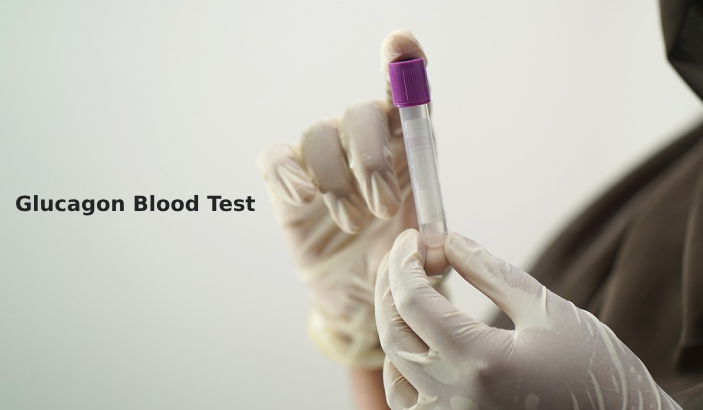Glucagon is a crucial hormone involved in carbohydrate metabolism, working opposite to insulin by helping to raise blood glucose levels when they fall too low. The glucagon blood test measures the amount of glucagon in the blood, providing valuable insights into various health conditions, including diabetes, pancreatic function, and certain tumors.
Purpose of the Glucagon Blood Test
- Diagnosing Pancreatic Disorders: The test helps diagnose disorders affecting the pancreas, particularly tumors such as glucagonomas, which can produce excessive amounts of glucagon.
- Understanding Blood Sugar Levels: It assists in evaluating unexplained hypoglycemia (low blood sugar) and distinguishing between different causes of hypoglycemia.
- Monitoring Specific Conditions: For patients with conditions like multiple endocrine neoplasia type 1 (MEN1), the test monitors glucagon levels as part of broader disease management.
Preparation for the Test
- Fasting: Patients are usually required to fast for 8 to 12 hours before the test to avoid any food intake that could influence glucagon levels.
- Medication Adjustment: Informing the healthcare provider about all medications is crucial as some can affect glucagon levels. Adjustments might be needed before the test.
- Physical Activity: Avoiding strenuous exercise before the test is also recommended because physical activity can affect hormone levels.
Procedure of the Glucagon Blood Test
- Blood Sample Collection: Blood is drawn from a vein, typically in the arm. The process involves inserting a needle into the vein to collect blood into a vial or syringe.
- Handling and Processing: The blood sample is then properly labeled and transported to a laboratory for analysis.
- Duration: The actual drawing of blood usually takes only a few minutes, although waiting times in the clinic can vary.
Normal Range
- Typical Values: Normal glucagon levels in the blood are generally between 50 to 100 pg/mL (picograms per milliliter), although this range can vary slightly depending on the laboratory and the assay used.
- Context-Specific Norms: It’s important to note that normal values may differ based on the specific conditions being tested and individual health.
Results Interpretation
- Normal Results: Normal glucagon levels suggest that the pancreas is functioning properly and that there are no significant abnormalities in glucagon production.
- Elevated Glucagon Levels: High levels might indicate a glucagonoma or other pancreatic tumors, as well as certain rare genetic disorders.
- Low Glucagon Levels: Lower than normal levels could suggest potential issues with glucagon production, which might be linked to hypoglycemia in specific contexts.
Conclusion
The glucagon blood test is used to assess pancreatic function and investigate the causes of unexplained fluctuations in blood sugar levels. This test is an excellent example of how targeted blood testing can provide significant insights into complex endocrine conditions, aiding in effective diagnosis and management.
I specialize in writing about health, medical conditions, and healthcare, drawing extensively from scientific research. Over the course of my career, I have published widely on topics related to health, medicine, and education. My work has appeared in leading blogs and editorial columns.








